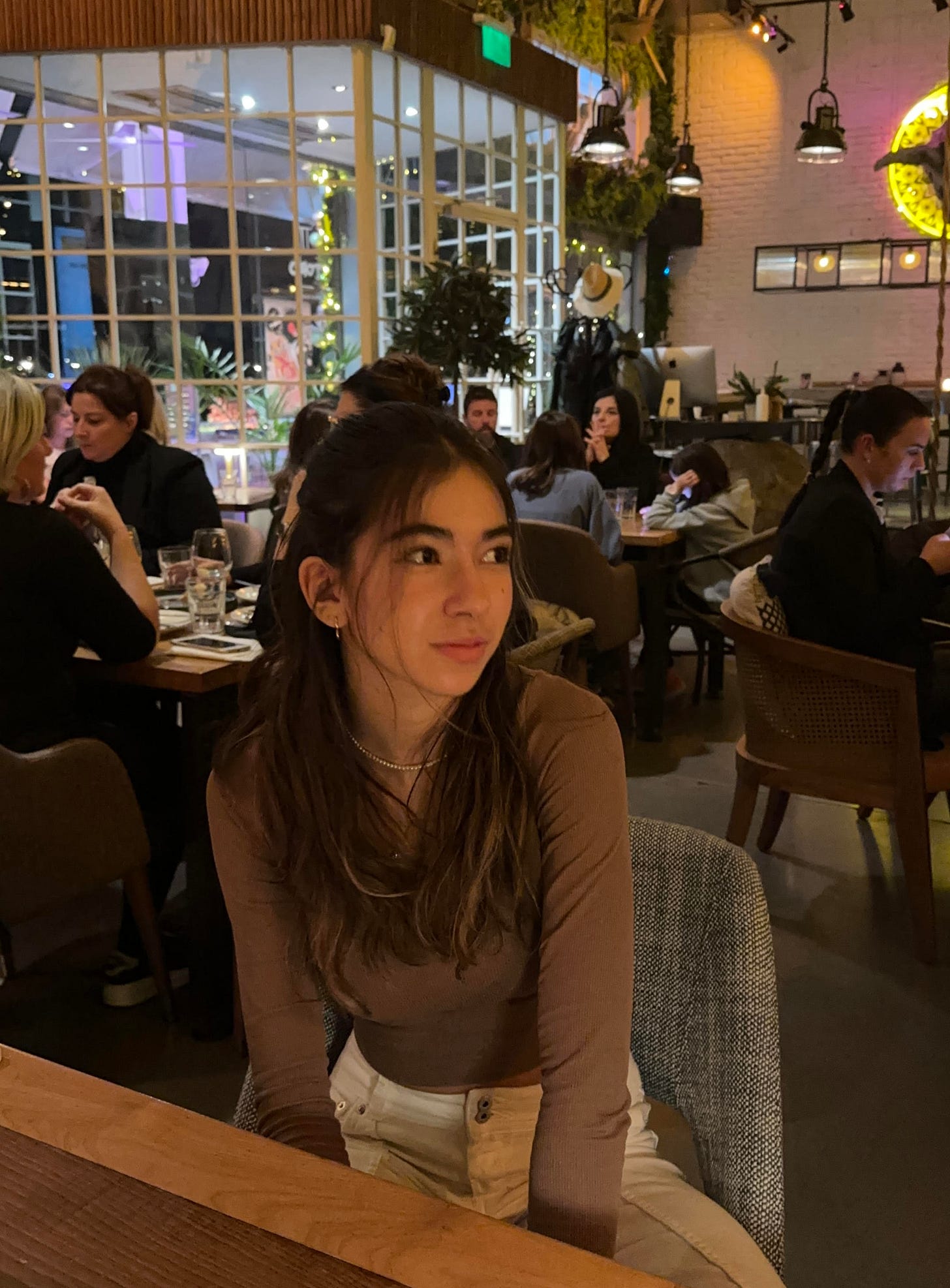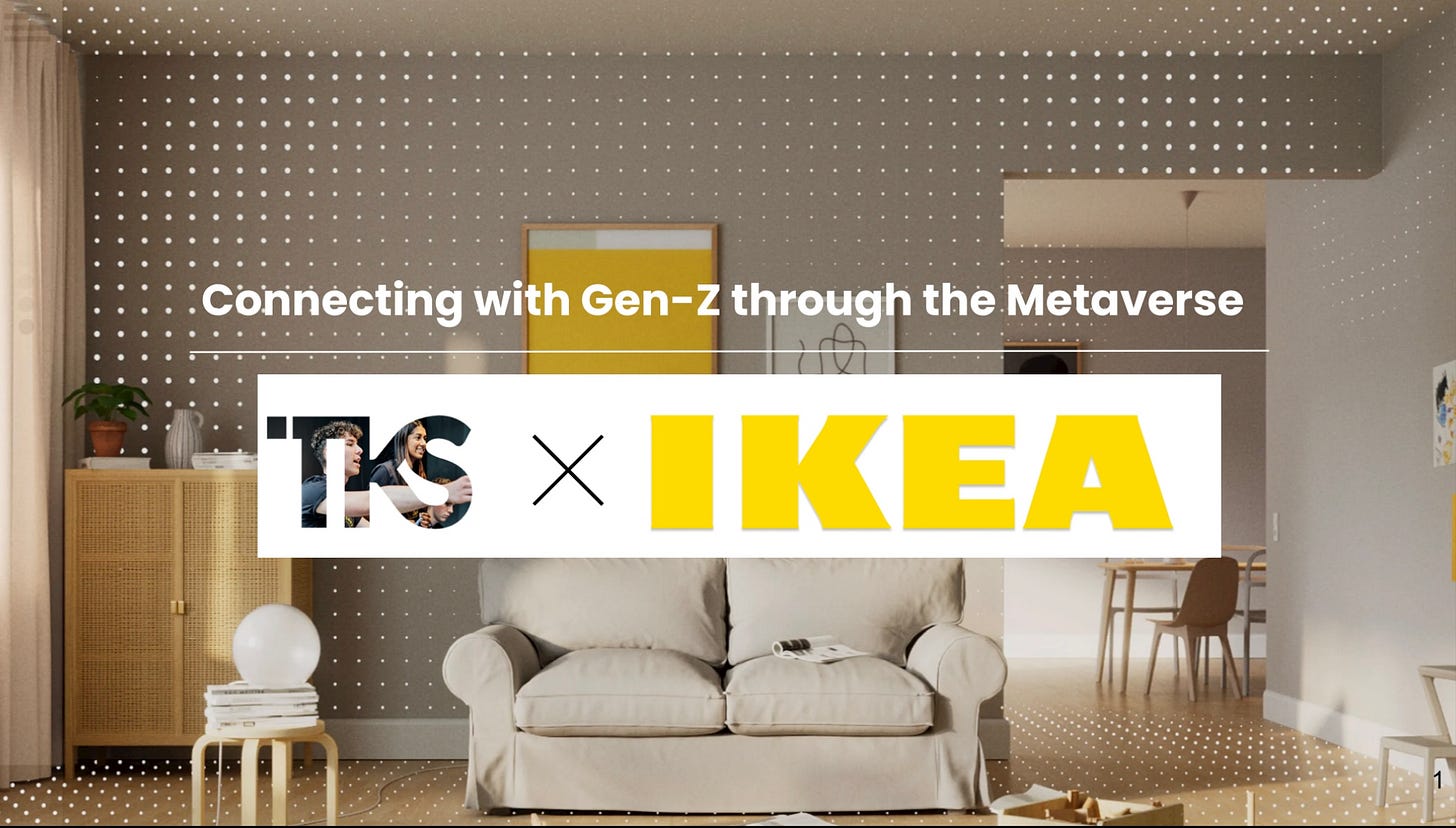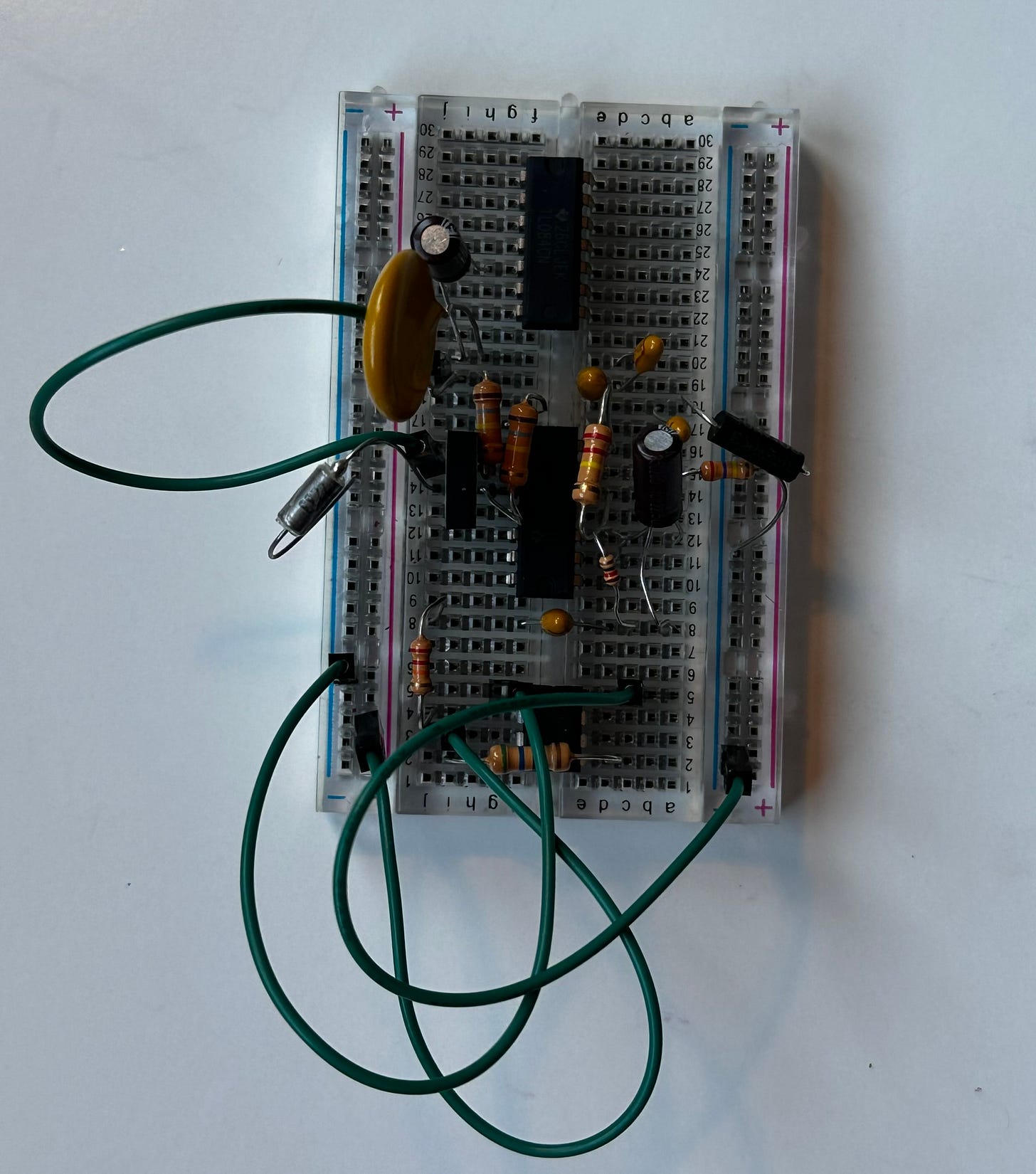Jovana's December Archives
Solving a multi-billionaire company's problem statement and building a brain-computer interface!
If this is your first time reading my newsletter, you probably don’t know who I am. (I strongly suggest reading my two other newsletters!). For those who don’t know, I am Jovana a 15-year-old, a brain-computer interfaces (BCI) and climate change enthusiast! For some basic understanding about me: I do competitive athletics (mainly high jump and long jump) and I am in The Knowledge Society (10-month innovation program about emerging technologies).
I have been in TKS for four months, and we have done A LOT. In this newsletter, I will cover my achievements in the past month (December)!
Sprint Challenge with IKEA.
It was that time of the year in TKS when the students in the innovate program were able to choose one of three multi-billionaire companies and work with a team to solve a problem statement. I got in a group with 3 other students, and we decided to solve a real-life problem IKEA has in only 3 weeks! IKEA’s problem statement was - How can IKEA get Gen Z to engage more with the brand through the metaverse?
Alongside the problem statement, we had many other things we were encouraged to incorporate within our solution, such as sustainability and self-expression. By “dissecting” the problem statement we realized that IKEA was struggling to attract Gen-Z customers, because Gen-Z is looking for immersive and personalized digital experiences, that IKEA does not provide.
Our solution is to create an IKEA metaverse through an app, that is immersive, personalized, and uses experiential learning to communicate IKEA’s sustainability. Our solution has four main parts (that I will quickly cover):
Virtual Identity: Players are free to customize their avatars in any way they want. They are also capable of purchasing an animal companion based on IKEA’s plush toy collection.
Self-expression rooms: Users are free to replicate their own rooms, or to just build anything they imagine (while of course using furniture from IKEA’s catalog)
Challenges: Players have a week to create a room based on the challenges themes. The top 10 user’s rooms get rewarded, however, to participate in a challenge there is a fee. There is a feature to explore other players’ rooms in an immersive way.
Experiential learning: An immersive experience where users can follow the story of a piece of furniture from the collection and preparation of wood, textiles, or any other material used through to the transport, creation, and packaging all the way until it reaches the IKEA store. This portrays IKEA’s sustainability line in a clear and impactful way, this is critical because 78% of Gen Z are not aware of it.
If you want to know more about our solution, feel free to check out the slideshow (recommendation deck) that we created!
This was all done towards the end of November, but in December we found out that we had made it to the top five teams and were invited to present our solution to IKEA’s executives! This was an incredible one-of-a-kind experience, not just having the opportunity to present but also hearing other teams’ solutions. IKEA decided that they wanted to incorporate parts from all of the top five teams’ solutions!
My biggest takeaway from the whole challenge was understanding what high standards really looks like. Creating a seemingly professional slide deck, and having a clearly communicated idea is what got us into the top five.
TKS Focus - Brain-Computer Interface
Brain-computer interfaces (BCI) is the emerging technology I chose to pursue for my focus (long-term project) throughout the whole of TKS. For the first stage, which was writing an article I narrowed it down to BCIs used in the field of dreams. Specifically inducing lucid dreams, communication from a dream to the real world, and what the future of our dreams could look like. If you’re curious about the topic go check out the article!
For the second stage of the focus, I decided to actually create a brain-computer interface. Before this, I had little to no experience in engineering and very little in coding, so I knew this would be a challenge for me. I scoured the internet for days until I found a suitable DIY guide on how to make an EEG BCI system. And to my disappointment, it wasn’t a step-by-step tutorial telling me to plug what parts into what holes on the breadboard. Instead, it provided a schematic, which I needed to understand how to read, but before that, I needed to understand what a schematic was.
But you get it, I knew nothing and now I’m trying to learn so that I can properly build the BCI. Now I am around 3/4’s done with the circuit and positive that half of it is wrong! This is totally okay because I will be finishing it (and correctly) very soon!
For my first project with the BCI, I plan to create a ping-pong game that you can play with just your mind!
End of the Year 2022 🎆
Finished the year strong with an amazing virtual global session in TKS with over 300+ students from all over the world where we practiced being authentic while meeting with each other. Spent a lot of time with family, and finally got to take a break from school!
Just so you don’t miss me while waiting around for my January newsletter, follow me on:
Happy New Year and thank you for supporting and reading my newsletter!








Loved seeing the photo of the brain computer interface WIP - so cool! Can’t wait to see you using it once it works!